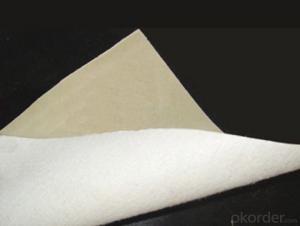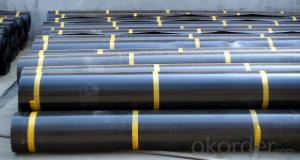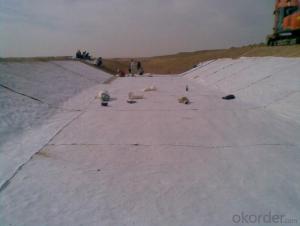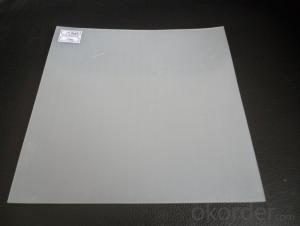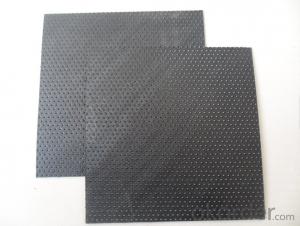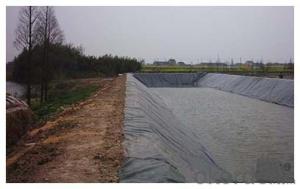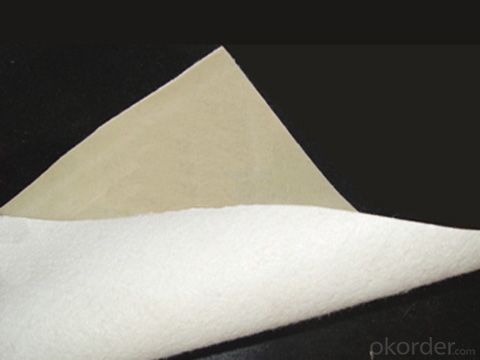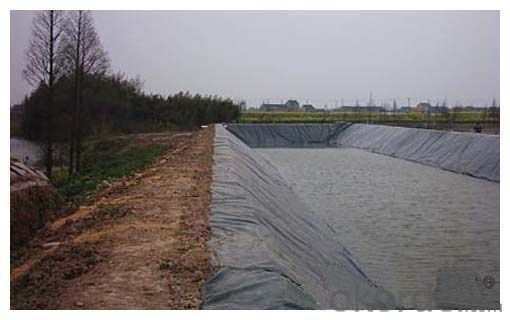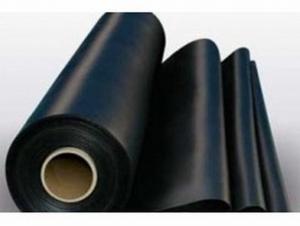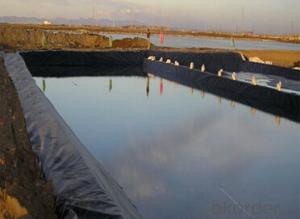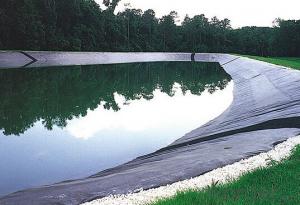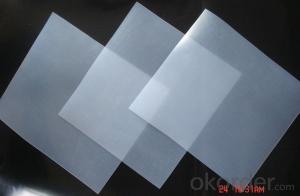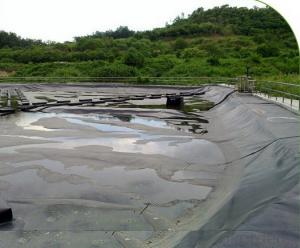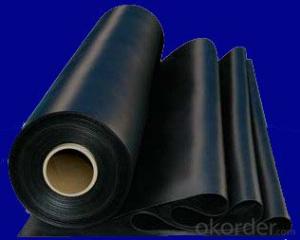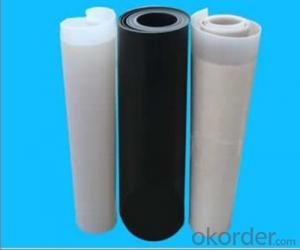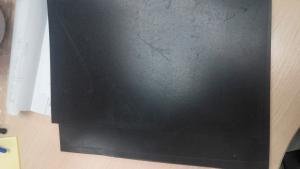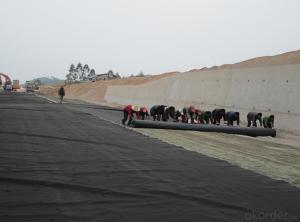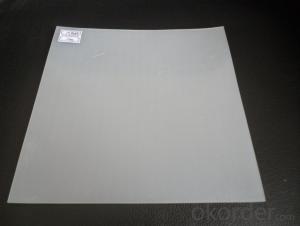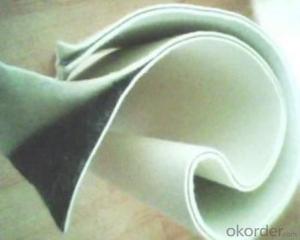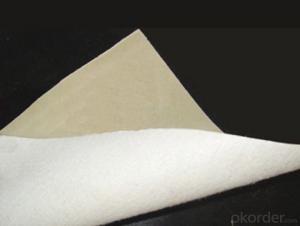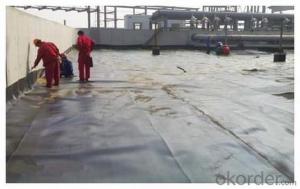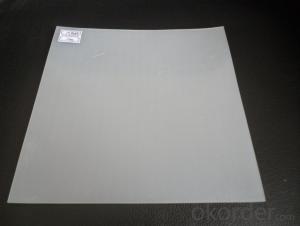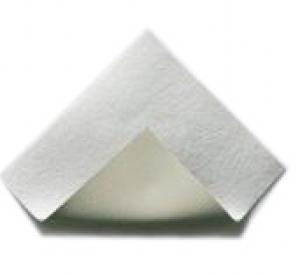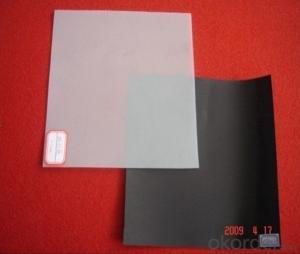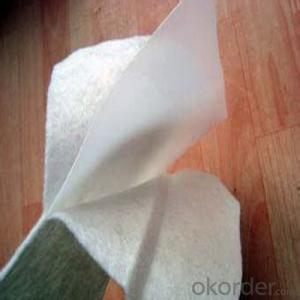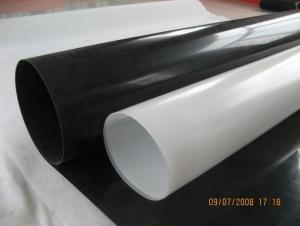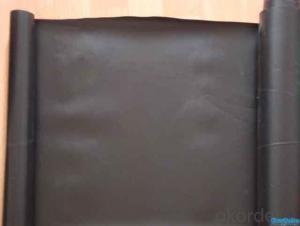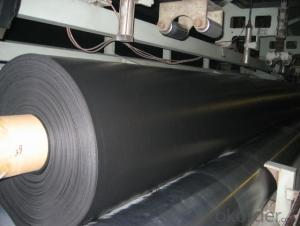Tanques Con Geomembrana LLDPE para Vertederos para Prevenir las Aguas Residuales
- Loading Port:
- Qingdao
- Payment Terms:
- TT OR LC
- Min Order Qty:
- 5000 m²
- Supply Capability:
- 500000 m²/month
OKorder Service Pledge
OKorder Financial Service
You Might Also Like
LLDPE Geomembrane for Landfill Images
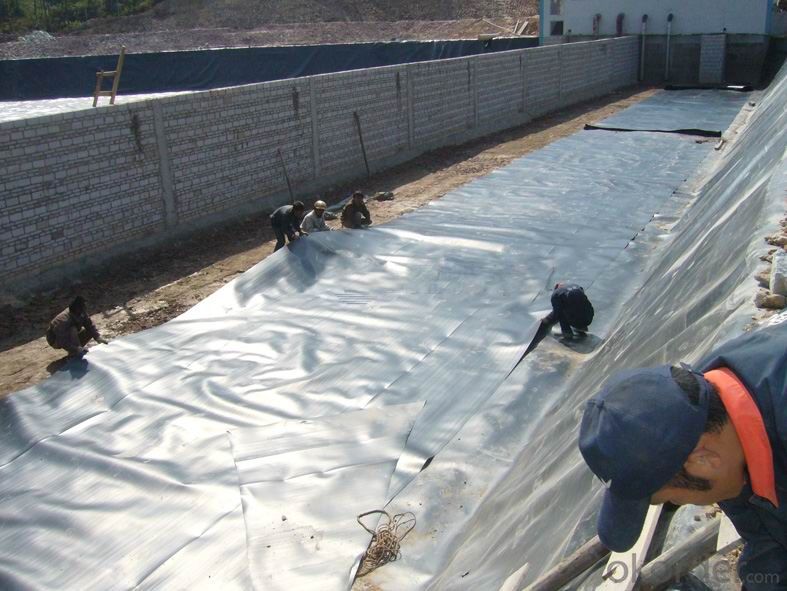
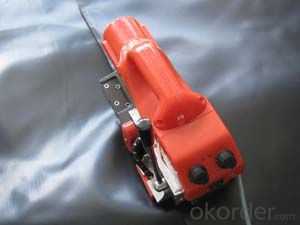
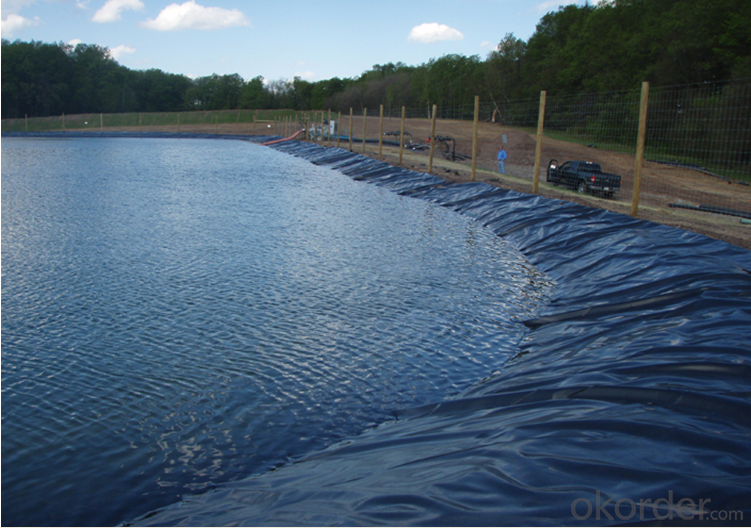
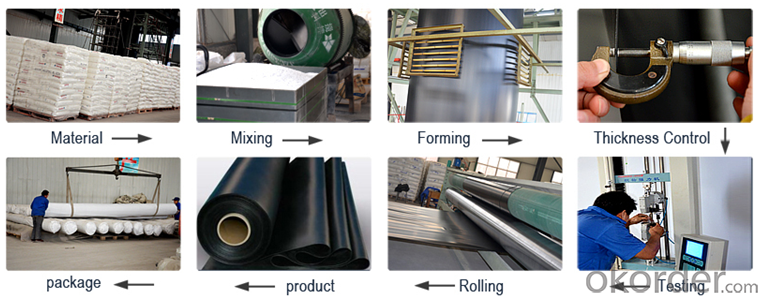
LLDPE Geomembrane for Landfill Specification :
Tensile StrenghtMD/TDMPa | Environment Protection |
≥17 | |
Elongation at BreakMD/TD | ≥450 |
Right-angled TearMD/TDN/mm | ≥80 |
Anti-crack F20h | |
-70°Clow temperature impactembrittlement performance | pass |
200°C oxidation inducement time (min) | |
Carbon black content | 2.0-3.0 |
FAQ:
1. How about the delivery time?
Two weeks upon receipt of down payment.
2. What kind of payments do we accepted?
T/T, L/C, WesternUnion, MoneyGram.
3. What's are the MOQ?
Normally the MOQ is 5000 SQM in theory.
And we can provide you free samples for quality inspection.
4. Do you charge for the samples?
Accordeing to our company policy, the samples are freee, we only charge the freight fee. And we will return the freight fee in your second order.
5. Can you produce the product according to customers' requirements?
Sure, we are professional manufacturer, OEM and ODM are both welcome
- Q: Is electrothermal?film safe?
- Electrothermal?film is safe, general leakage protectors can't be installed as they always trip, so they are gradually eliminated in the heating market. But it has the advantage of power saving, because the carbon heat energy conversion rate is very high, but the process is not good - too thin, which is easy to cause electric leakage. Although metal heating cable is safe, it costs much electricity. It is recommended that you use carbon fiber heating cable, which is a product integrating the advantages of electrothermal?film and metal heating cable, safe and energy saving.
- Q: Are geomembranes resistant to puncture?
- Yes, geomembranes are designed to be puncture-resistant. They are typically made from durable materials such as high-density polyethylene or PVC, which provide excellent resistance against punctures from sharp objects or external forces. However, it is important to note that the level of puncture resistance may vary depending on the specific type and thickness of the geomembrane used.
- Q: what's the function of paving composite geo-membrane in fishpond?
- seepage-proof and water conservation
- Q: How do geomembranes contribute to the prevention of slope erosion?
- Geomembranes contribute to the prevention of slope erosion by acting as a barrier between the soil and the surrounding environment. They provide a waterproof and impermeable layer that helps to control water flow and prevent the infiltration of moisture into the soil, which is a common cause of slope erosion. By effectively reducing water seepage and preventing soil movement, geomembranes help to stabilize slopes and protect them from erosion.
- Q: How to fix template by pouring concrete after laying geomembrane?
- 1, start pouring room, finished room 2, mix proportion condition on the site: Cement: Sand: Stone: Water: 3, Metering conditions on the site: cement lack of KG sand lack of KG stone lack of KG water lack of KG (plus vehicle weight case) concrete step exemption 4, concrete slump casual inspection does not comply with the requirements of mix proportion 5, record the number of sets of concrete specimen and intensity of the construction unit; 6, record pouring thickness of cusion layer, elevation condition and pouring sequence (which axis)
- Q: what's the distinguish between geomembrane and waterproof board?
- Basements and tunnels; tailing dam, rockfill dam; waste storage; construction cofferdam; m2-800g & # 47; channels: Membrane thickness from 0: anti-seepage, isolation purposes, waste water reservoir dam and reservoir area, tunnel anti-seepage lining: Geotechnical dam, highway: 4-6-meter: Two cloth one membrane (both sides of the impermeable membrane are added with protective geotextile) one cloth one membrane (one side of impermeable membrane is added with protective geotextile) width, railroad embankment .8mm protective layer of geotextile from 100g & # 47.2mm - 0; roadbed and other foundation saline control, masonry dam and concrete dam development pressure; leakproof roofing product features; roads, Khouang); dike, reservoir tank (pit; underground; expansive soil and collapsible loess waterproof layer, dam levels impervious blanket, ground vertical impermeable layer
- Q: How do geomembranes handle temperature variations?
- Geomembranes are designed to handle temperature variations by being flexible and resistant to thermal expansion and contraction. They can withstand both extreme hot and cold temperatures without becoming brittle or losing their structural integrity. Additionally, geomembranes have excellent thermal insulation properties, which help regulate temperature changes and minimize heat transfer through the material.
- Q: What are the aesthetic options for geomembranes?
- The aesthetic options for geomembranes are primarily limited to the choice of color and pattern. Geomembranes are typically available in a range of colors such as black, white, blue, green, and tan. Some manufacturers may also offer custom colors upon request. Additionally, certain geomembranes can be designed with patterns or textures to mimic natural materials like stone or wood. However, it's important to note that the primary purpose of geomembranes is functionality rather than aesthetics.
- Q: What are the requirements of using the new geosynthetics?
- The construction requirements of geosynthetics are as follows. First, the definition and function features: reinforcement, protection, filtration, drainage and insulation. Second, types and purposes: geotextile net, geogrid, geotextile bags, geotextile, geotextile composite drainage material, fiberglass mesh and geotextile mat. Purposes: 1, reinforced embankments, 2 reinforced embankment fill 3, filtration and drainage, 4 embankment protection. Third, the construction requirements of geosynthetics (methods and requirements of using the geotextile to reinforce the foundation) (a) the method of using geotextile to reinforce the foundation: When using the lapping method, lap length is preferably to be 0.3 to 0.9m. When the splicing method is used, the bonding width should be not less than 50mm and the bonding strength should be not less than the tensile strength of the material. The upper and lower seams should be staggered and the staggered length should be not less than 0.5m. (b) The main requirements for the method of using geotextile to deal with the base are explained as above.
- Q: What are the advantages of using geomembranes in landfill gas collection systems?
- There are several advantages of using geomembranes in landfill gas collection systems. Firstly, geomembranes provide a barrier that prevents the escape of gases, reducing the risk of air pollution and potential health hazards. Secondly, they help to maintain the integrity of the landfill by preventing the intrusion of water, which can lead to the production of leachate and contamination of groundwater. Moreover, geomembranes are durable and resistant to degradation, ensuring a longer lifespan for the gas collection system. Lastly, using geomembranes can improve the efficiency of gas collection, as they create a well-defined collection area, facilitating the extraction and utilization of landfill gas for energy generation.
Send your message to us
Tanques Con Geomembrana LLDPE para Vertederos para Prevenir las Aguas Residuales
- Loading Port:
- Qingdao
- Payment Terms:
- TT OR LC
- Min Order Qty:
- 5000 m²
- Supply Capability:
- 500000 m²/month
OKorder Service Pledge
OKorder Financial Service
Similar products
Hot products
Hot Searches
Related keywords
